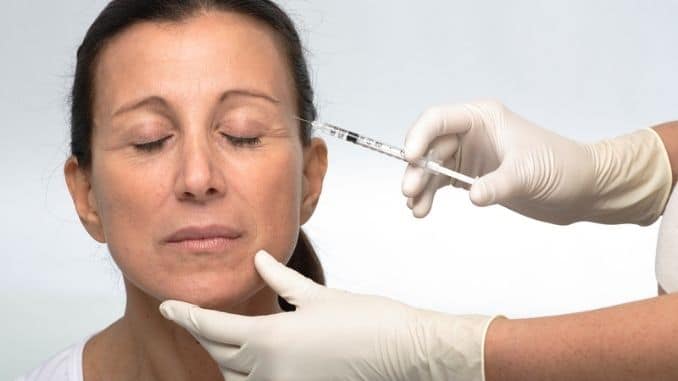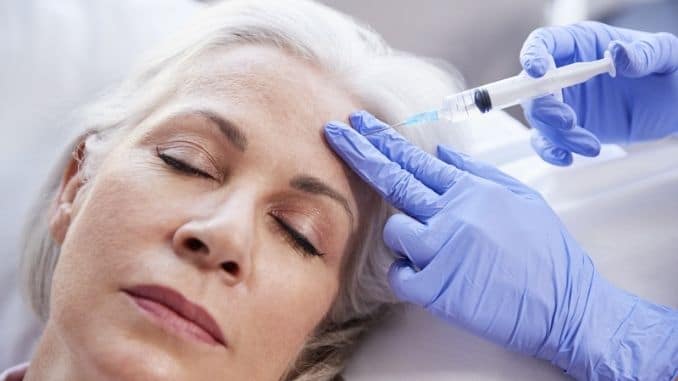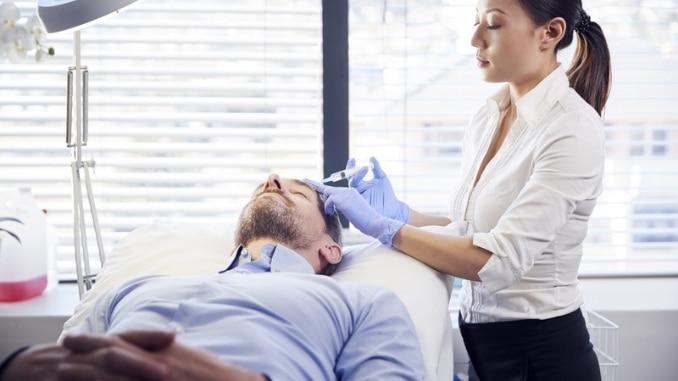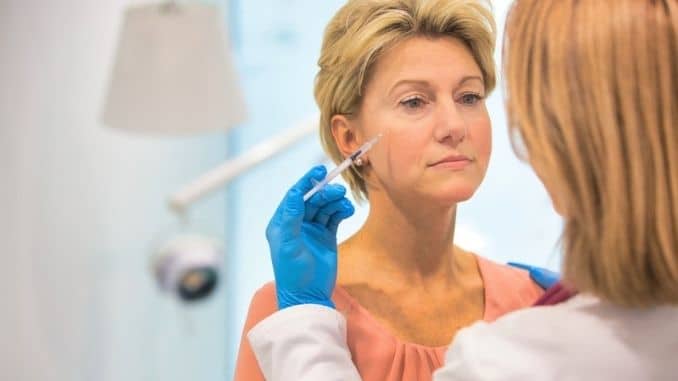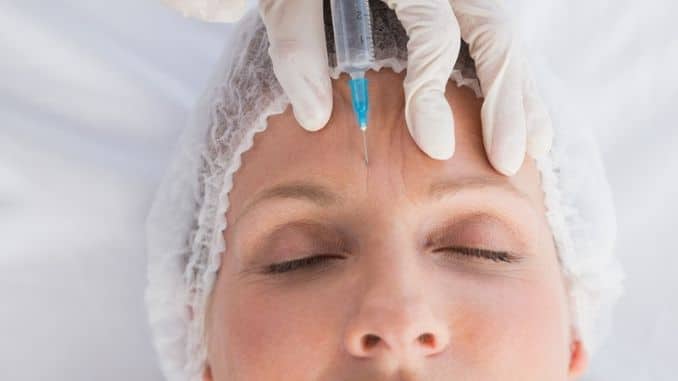You saw it in a photograph—those wrinkles between your brows. You didn’t remember them looking that prominent before. You check the mirror and see that those fine lines around your eyes are getting deeper too.
You don’t feel older, but you have to admit it: you look older. You don’t want to. You’ve heard that Botox injections are safe and require little downtime. You wonder: Is it too late for me to try it?
What is Botox?
Botox, also called Botulinum toxin type A, is a drug made from a toxin produced by a type of bacteria (Clostridium botulinum). It’s the same type of toxin that causes a life-threatening type of food poisoning called botulism.
In small doses, though, Botox can be helpful. Doctors use it to treat several health problems, including the following:
- Severe underarm sweating
- Cervical dystonia (a neurological disorder that causes severe neck and shoulder muscle contractions)
- Blepharospasm (uncontrollable blinking)
- Lazy eye
- Strabismus (misaligned eyes)
- Chronic migraines
- Overactive bladder
Of course, Botox is also used to temporarily smooth facial wrinkles. Botox injections work by weakening or paralyzing certain muscles or blocking certain nerves. The effects last about three to twelve months, after which a repeated treatment will be needed.
Is Botox Bad for Your Body?
The Mayo Clinic states that Botox injections are “relatively safe when performed by an experienced doctor.” There are potential side effects, though, including:
- Pain, swelling and bruising at the injection site
- Headache or flu-like symptoms
- Droopy eyelid or cockeyed eyebrows
- Crooked smile or drooling
- Eye dryness or excessive tearing
The injection can spread to your body, where it can cause other problems like muscle weakness, loss of bladder control, and vision and/or breathing problems, but this is very rare. As long as you go to an experienced doctor, they will place the injections precisely to avoid these types of side effects.
How Botox Can Help in Your 40s and Beyond
If you’ve never used Botox before, you may wonder if it’s too late by the time you’re in your 40s or beyond. After all, many younger people are using the treatment now, often as a “preventative” against future wrinkles.
Botox has a good reputation for being a fast cosmetic treatment that can offer immediate results. It requires little downtime and often makes wrinkles and fine lines fade within 48-72 hours. The American Board of Cosmetic Surgery notes that Botox injections are the most popular cosmetic procedure nationwide.
Might this treatment be right for you? Let’s explore how Botox may help you look younger, no matter what your age.
1. Helps Erase Some of the Effects of Time
Botox targets the muscles and nerves that cause dynamic wrinkles—those wrinkles that form over time due to your facial expressions. When you smile, grimace, frown, and more, these muscles move into the same relative positions again and again.
By the time you’re in your 40s or beyond, you may notice that you’ve got fine lines and wrinkles around the eyes, nose, and mouth, as well as on your forehead, that are a result of these repeated movements. Botox can help target and relax these muscles to help smooth the appearance of these wrinkles.
2. Can Help You Feel More Confident
According to the American Society of Plastic Surgeons, nearly 60 percent of Botox users are between the ages of 40 and 54, so you’re not alone if you’re thinking about this treatment now. Many women, for instance, choose to try Botox for the first time in their 40s because that’s when they first start to notice signs of aging.
This is also the age at which anti-aging creams and serums no longer seem to be working as well against fine lines and wrinkles. You may realize that you have to do more to create a noticeable difference.
Looking older can sometimes make you feel less confident at work and among your peers, and it can also make you feel less like your youthful, vibrant self. Botox treatments may help you to recover your younger appearance, which can help boost your confidence as you go about the rest of your life.
3. Can Address Specific Aging Problems
If you’re thinking about using Botox, it’s important to know what it can do and what it can’t do. For those 40 and over, it can help to smooth lines around the eyes—particularly crow’s feet—fade forehead and frown lines, address wrinkles around the corners of the mouth, and decrease the appearance of frown lines.
Botox will not, however, address sagging skin or reduced volume in the face and neck. For these issues, it’s better to look into dermal fillers, which are injections that plump up the skin to smooth lines and wrinkles.
Botox works best on those wrinkles that appear because of repeated expressions. Talk to your doctor (a facial plastic surgeon is best). A combination of Botox and fillers may be just the ticket to achieve the results you’re looking for.
What Happens During and After a Botox Treatment?
Before you commit to getting a Botox treatment, be sure that you find a good practitioner. This is the most important factor contributing to your results. A good practitioner will know how to use the injections without causing side effects, and can also guide you in what treatments are best for your particular concerns.
Make sure you choose an established medical clinic that has a good reputation and the appropriate certifications. Check online for reviews and before and after pictures. Avoid non-medical clinics like hairdressers or beauty salons, as getting your treatments at these types of locations increases your risk of side effects. Ideally, you will get your treatment from a board-certified cosmetic surgeon.
During your pre-treatment consultation, your doctor will check your medical history to be sure you are a good candidate for Botox. They may also ask you to frown, raise your brows, squint, and perform other expressions to get a sense of where and how much of the drug to inject.
On your appointment day, you will arrive without makeup and a clean face. The doctor may give you a topical anesthetic to numb the area before injection, though many patients find this unnecessary. The needles used to inject Botox are very thin and the injections are not very deep, so though you will feel a little prick, the discomfort is usually minimal.
Each injection sends small amounts of the drug into your skin or muscles. The number of injections you’ll need depends on many factors, including how much of the skin needs to be treated. You may experience mild redness and/or swelling at the injection sites.
You will be able to return to your normal activities after the treatment, though your doctor is likely to advise you not to rub or massage the treated areas for 24 hours. This helps prevent the drug from spreading to other areas where it’s not needed. It’s also best to avoid strenuous exercise on the first day and to keep your head upright.
Depending on your treatment, you should see results within 3-7 days.
Does Botox Make You Look Older After It Wears Off?
The wrinkle-reducing effects of Botox do eventually wear off. How long that takes depends on the area treated, the product used, and your particular physiology. To maintain the effect, you will need regular follow-up injections, so once you start Botox, it's important to know that you will likely have to continue if you want to maintain the same look.
Of course, you can always stop the injections, after which the wrinkles may start to form again, but it will take time. As for whether you’ll look “older” after the injections wear off, most doctors would agree that you will not.
Once the drug wears off, the wrinkles will begin to appear again, but there is no evidence that they will get worse. After you’ve gotten used to seeing smooth skin there, though, you may notice the wrinkles more as the Botox wears off. Still, you’ll enjoy looking younger relative to your age.
Neither do you have to worry about the “frozen” look that used to be a worrisome side effect of Botox? Cosmetic surgeons know a lot more today than they did years ago, and as long as you go to an experienced doctor, you will be unlikely to suffer from this side effect.
It is important to know, though, that after using Botox continuously for years, your muscles will become trained not to move, and they will become weaker because of that. Over a prolonged period (many years), the muscle may atrophy from lack of use.
Talk to your doctor about these possible effects and what you can do. Some people are happy about this as it means the muscle is less likely to cause wrinkles in the future. That means they can get fewer treatments to maintain the desired results.
Another potential effect of long-term Botox use is thinning skin. This is a rarer side effect, but it is possible in some people, particularly those who start Botox in their 20s. Starting later in life reduces your risk of this issue.
The Most Important Thing: Find a Good Surgeon!
Here’s the bottom line if you’re considering Botox in your 40s or later: Find a really good cosmetic surgeon.
This is important (why we're mentioning it again!) for a few reasons:
- Only an experienced surgeon can determine how much Botox you need and where for the best results.
- Only an experienced surgeon can recommend other procedures you may need to achieve your best look.
- Only an experienced surgeon can adjust treatment as you age to be sure that it continues to help rather than hinder your progress.
Every good surgeon has an arsenal of tools like fillers, lasers, and other treatments that can be used to improve your overall appearance. In truth, cosmetic surgeons are like artists, using just what’s needed where it’s needed to enhance your natural beauty.
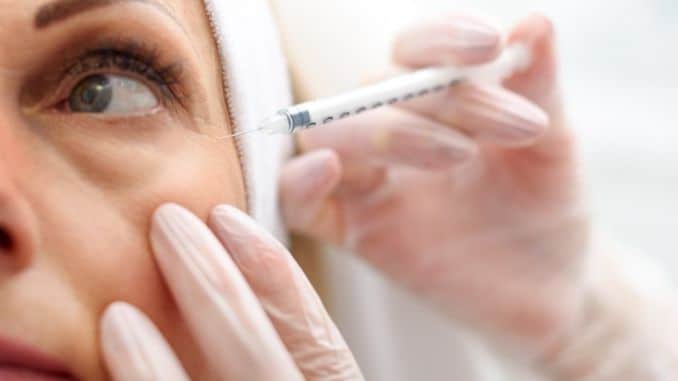
In the wrong hands, Botox can be more of a disappointment than a triumph, so do your research carefully, then check on the cost as well—most cosmetic surgeries are not covered by health insurance. Don’t be afraid to ask questions and make a decision that feels right for you. When using a qualified practitioner, Botox is a safe procedure for almost anyone looking to decrease the signs of aging.
Looking for more all-natural ways to fight the signs of aging? Click here to learn more!

